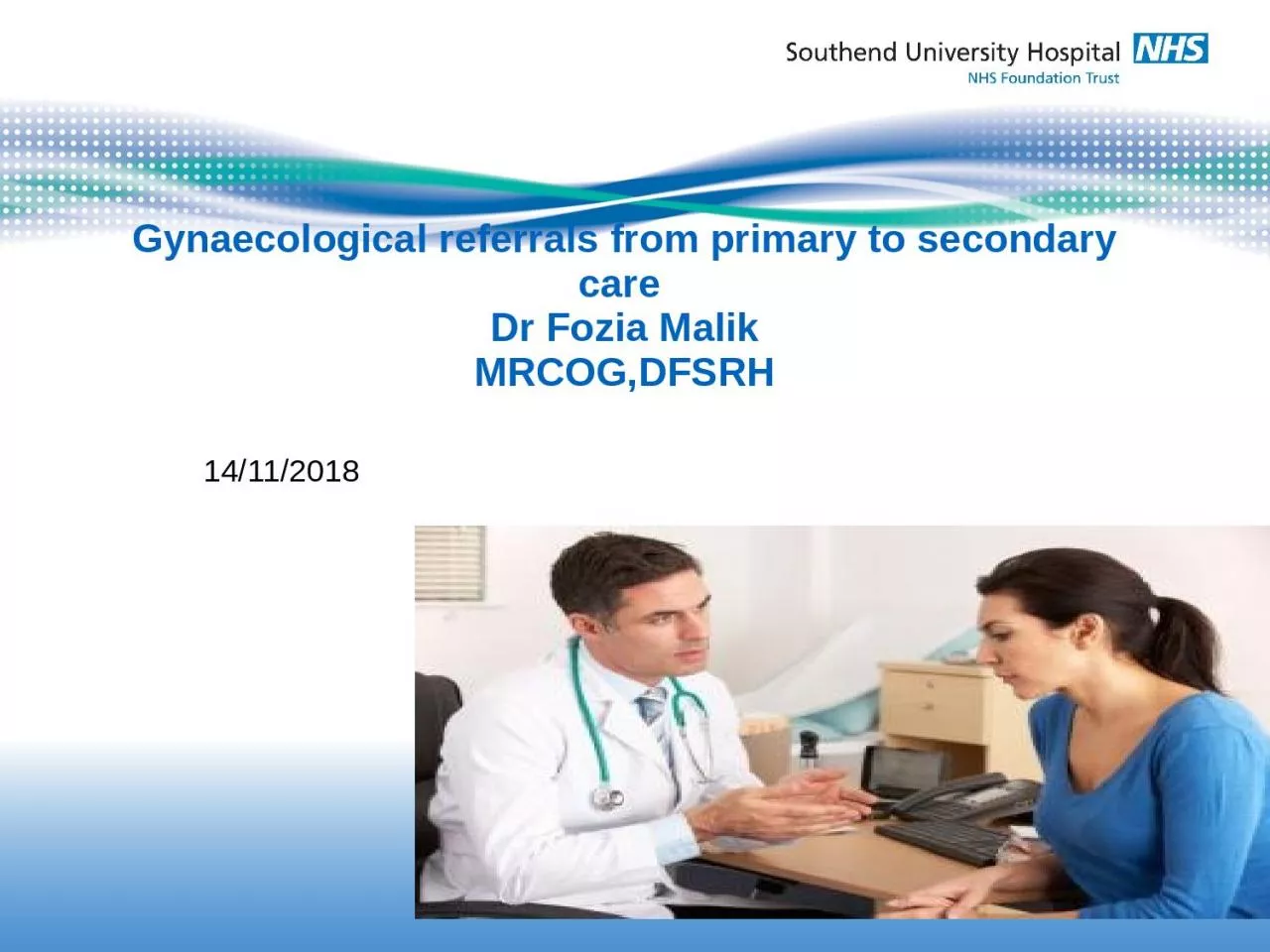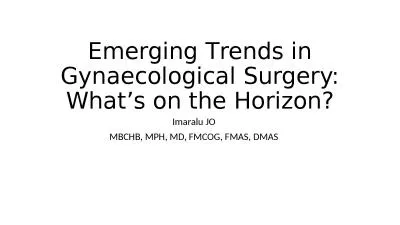PPT-Gynaecological referrals from primary to secondary care
Author : phoebe | Published Date : 2024-02-09
Dr Fozia Malik MRCOGDFSRH 14112018 Referral to Gynaecology Out Patient chronic pelvic pain Polycystic Ovary Syndrome Nonneoplastic epithelial disorders of the
Presentation Embed Code
Download Presentation
Download Presentation The PPT/PDF document "Gynaecological referrals from primary t..." is the property of its rightful owner. Permission is granted to download and print the materials on this website for personal, non-commercial use only, and to display it on your personal computer provided you do not modify the materials and that you retain all copyright notices contained in the materials. By downloading content from our website, you accept the terms of this agreement.
Gynaecological referrals from primary to secondary care: Transcript
Download Rules Of Document
"Gynaecological referrals from primary to secondary care"The content belongs to its owner. You may download and print it for personal use, without modification, and keep all copyright notices. By downloading, you agree to these terms.
Related Documents














